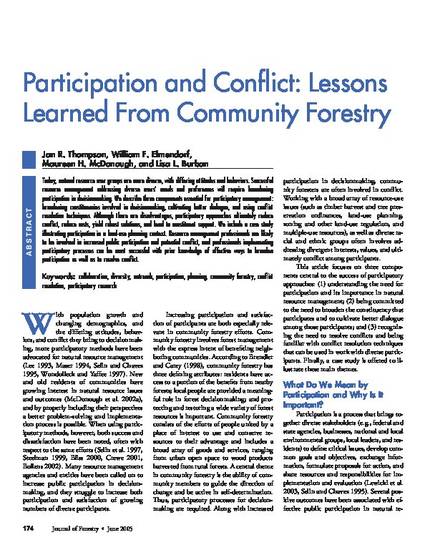
Today, natural resource user groups are more diverse, with differing attitudes and behaviors. Successful resource management addressing diverse users' needs and preferences will require broadening participation in decisionmaking. We describe three components essential for participatory management: broadening constituencies involved in decisionmaking, cultivating better dialogue, and using conflict resolution techniques. Although there are disadvantages, participatory approaches ultimately reduce conflict, reduce costs, yield robust solutions, and lead to constituent support. We include a case study illustrating participation in a land-use planning context. Resource management professionals are likely to be involved in increased public participation and potential conflict, and professionals implementing participatory processes can be most successful with prior knowledge of effective ways to broaden participation as well as to resolve conflict.
Available at: http://works.bepress.com/janette_thompson/4/

This article is from Journal of Forestry 103, no. 4 (June 2005): 174–178.